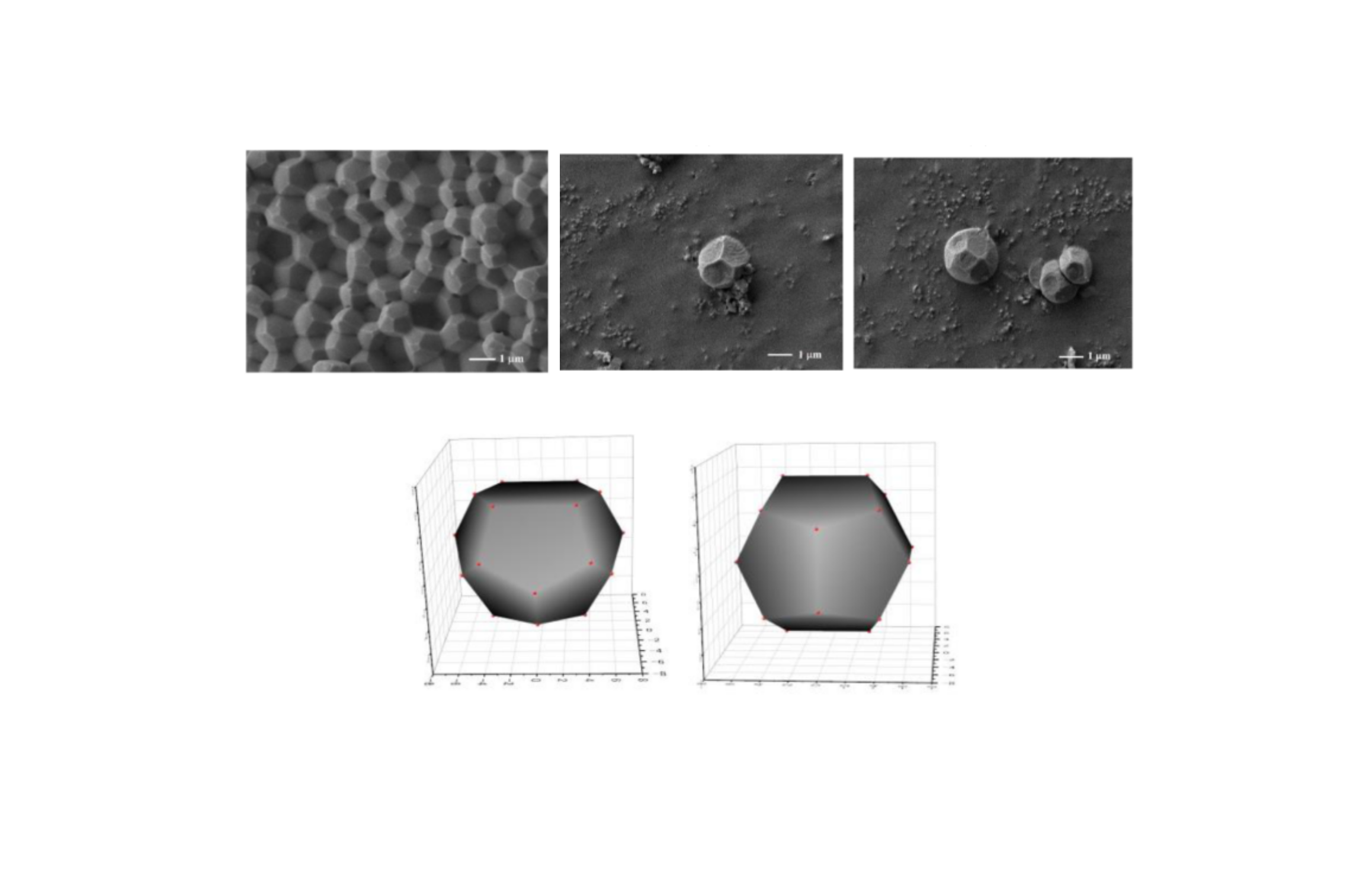Bringing the Kelvin Problem Solutions to Life with the First-Ever Polymeric Weaire-Phelan Structures
2022/11/28
- Research
Researchers from Japan construct polyhedral forms predicted to be the solutions of an age-old tessellation problem using polymers
Weaire-Phelan structures are unique 3D structures that efficiently tile a space into equal volumes with the least surface area. So far, only two cases of Weaire-Phelan structures have been discovered in physical systems and none have been created using organic materials. Now, researchers from Japan report the first-ever construction of polymeric Weaire-Phelan structures using polymerization-induced phase changes, paving the way for the development of advanced materials with new and unknown properties.

Title:Polymerization-induced phase separation-based synthesis of Weaire-Phelan structures.
Caption:Researchers from Japan have constructed, for the first time, a Weaire-Phelan structure using organic materials based on a joint-and-linker concept-based polymerization. (Top row) Images of PEMP-HDI network polymers 35 %wt (sample 3) under SEM. (Bottom row)The tetrakaidecahedron and dodecahedron polyhedrons in the theoretical Weaire-Phelan structure.
Credit:Naofumi Naga from SIT, Japan.
License type:CC BY 4.0.
Caption:Researchers from Japan have constructed, for the first time, a Weaire-Phelan structure using organic materials based on a joint-and-linker concept-based polymerization. (Top row) Images of PEMP-HDI network polymers 35 %wt (sample 3) under SEM. (Bottom row)The tetrakaidecahedron and dodecahedron polyhedrons in the theoretical Weaire-Phelan structure.
Credit:Naofumi Naga from SIT, Japan.
License type:CC BY 4.0.
The Weaire-Phelan structure is made of two kinds of cells–a tetrakaidecahedron having two hexagonal and twelve pentagonal phases, and an irregular dodecahedron with pentagonal faces, with the two cells having equal volumes. The structure is formed when 3/4 of the tetrakaidecahedron cells and 1/4 of the dodecahedron cells are arranged in a specific way. In the real world, the Weaire-Phelan structure has been observed only in two instances, namely liquid foam made from a detergent solution and a palladium (Pd)-lead (Pb) alloy. Interestingly, a Weaire-Phelan structure made of organic materials such as polymers has never been constructed.
Now, a group of researchers from Japan has risen to the occasion, developing the first polymeric Weaire-Phelan structure using facile synthetic procedures. This study, led by Prof. Naofumi Naga from Shibaura Institute of Technology, was published online in Scientific Reports on November 9, 2022. The study was done in collaboration with Prof. Tamaki Nakano from Hokkaido university through the Joint Usage/Research Center Program (MEXT).
The team used a network polythiourethane for polymerization-induced phase separation to construct the Weaire-Phelan structure. “The proposed Weaire-Phelan structure has closely packed uniform particles of the order of micrometers; this has never been achieved before. This is the first example of a Weaire-Phelan structure made from a polymer species and of a solid-polymer cubic honeycomb created by polymerization-induced phase separation,”explains Prof. Naga, speaking of the team’s motivation behind the study.
To synthesize the polymer, the team used a simple polyaddition reaction between two compounds–tetrakis (3-mercaptopropionate) (PEMP) and hexamethylene diisocyanate (HDI). This synthetic method is based on the joint-and-linker concept, in which a multi-functional monomer serves as the joint source monomer and an α,ω-bifunctional monomer serves as the linker source monomer, forming a polymer network. Accordingly, PEMP, a multi-functional primary thiol, served as the “joint” source monomer, and HDI, a diisocyanate, served as the “linker” source monomer. The reaction took place in the presence of triethylamine (TEA), which served as the base catalyst in toluene.
The team produced three samples using monomer concentrations at 25, 30, and 35 wt%, and called them samples 1, 2, and 3, respectively. They found that sample 3 exhibited space-filling polyhedron particles with hexagonal and pentagonal faces on its surface, which corresponds to the polyhedrons of the Weaire-Phelan structure. Further, 3D scanning electron microscopy was used to study the polyhedron structure of sample 3, which revealed structures of space-filling polyhedrons, matching the polyhedrons of the Weaire-Phelan structure exactly.
“The cubic honeycomb proposed by Kelvin was thus formed for the Weaire-Phelan structure in this work. The material synthesized in this work could potentially have applications in photonics, separation, catalysis, nanomedicine, and structural materials based on the new synthetic methodologies and structural concepts. This could open up a new direction of research for the development of advanced materials with unforeseen functions,” concludes an excited Prof. Naga.
And we’re just as eager to find out!
Reference
| Title of original paper: | The first space‑filling polyhedrons of polymer cubic cells originated
from Weaire‑Phelan structure created by polymerization induced phase separation |
| Journal | Scientific Reports |
| DOI: | 10.1038/s41598-022-22058-7 |
Funding Information
This research was partially supported by JSPS KAKENHI grant number 24550261, MEXT/JSPS KAKENHI grant number JP 19H02759, and Japan Science and Technology Agency grand number JPMJTMl9E4.Contact
Planning and Public Relations Section
3-7-5 Toyosu, Koto-ku, Tokyo 135-8548, Japan (2F the Centennial Main Building, Toyosu Campus)
TEL:+81-(0)3-5859-7070 / FAX:+81-(0)35859-7071
E-mail:koho@ow.shibaura-it.ac.jp